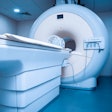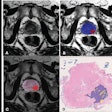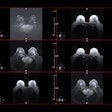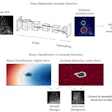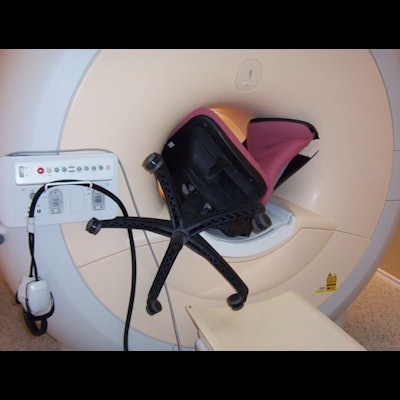
As the push toward stronger and faster MRI scanners continues, so does concern over magnet safety, according to Filiz Yetisir, PhD, who discussed the potential effects MRI has on patients at the 2021 International Society for Magnetic Resonance in Medicine (ISMRM) virtual meeting.
 Filiz Yetisir, PhD.
Filiz Yetisir, PhD.There are three main components of MRI scanners -- the main magnet, gradient coils, and radiofrequency (RF) coils -- that are essential to a machine's function. However, each of these components carries unique risks for patients and operators, namely the projectile effect, nerve stimulation, hearing damage, and tissue heating.
Yetisir, a postdoctoral graduate student at Harvard University School of Medicine, discussed these potential effects and provided tips for reducing their impact during procedures in a May 16 session at ISMRM 2021.
The main magnet
Consider that junkyard magnets capable of lifting cars have strengths of 1 tesla. Most of the MRI scanners used in clinical settings today have strengths of 1.5 tesla and 3 tesla, while scanners used mainly in research have strengths of 7 tesla -- and in some cases up to 11 tesla. Seven-tesla scanners, such as the Magnetom Terra scanner by Siemens Healthineers and the Signa 7.0T scanner from GE Healthcare, for instance, have recently been cleared for clinical marketing by the U.S. Food and Drug Administration.
The main safety risk associated with the main magnet is the projectile effect, or the "missile effect," according to Yetisir. MRI magnets attract iron particles with tremendous force. This can include other ferromagnetic objects in the scanning room, such as chairs or oxygen tanks.
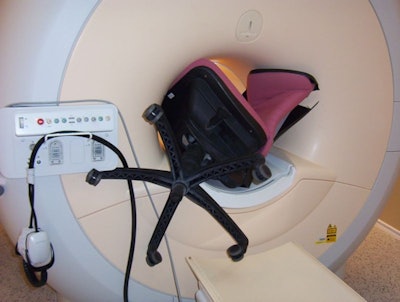 Office chair caught in MRI scanner. Image courtesy of Dr. Frank Shellock, MRISafety.com.
Office chair caught in MRI scanner. Image courtesy of Dr. Frank Shellock, MRISafety.com."If there's a person inside the scanner or in the path of the flying object, the projectile could result in serious injuries or even death," she said.
In 2001 in New York, for instance, 6-year-old Michael Colombini died after being hit in the head with an oxygen tank.
"The most important thing is to remember that the magnet is always on," Yetisir said.
Gradient coils
The magnetic field produced by the gradient coils in the MR scanner can induce an electric field in the patient's body due to Faraday's Law of Induction. This electric field may form "hot spots," which can create enough electric potential to stimulate large nerves. This phenomenon is known as peripheral nerve stimulation (PNS).
PNS causes discomfort for subjects due to a tingling or tapping sensation, and its severity depends on several factors, including the gradient coil type and wire pattern, the patient's body size, shape and tissue distribution, and nerve orientation and diameter, for instance.
"Similar to PNS, the electric fields induced by the gradient coils can stimulate the heart, leading to cardiac arrhythmia," Yetisir said.
Acoustic noise due to mechanical vibration is another safety concern associated with gradient coils because it can be discomforting for the patient and may damage hearing, especially with fast sequences such as echo-planar imaging.
Yetisir recommended communicating with patients regarding tingling or tapping sensations and monitoring the subject closely. If the patient experiences discomfort, one solution is to switch from first-level mode to normal mode or to select a slow gradient mode, if it is available.
Earplugs should be used by anyone in the scan room, extra protection should be used for vulnerable subjects, such as neonatal or pediatric patients, and for mechanical vibrations, table pads can be used for vulnerable patients, Yetisir suggested.
"If the patient is still too uncomfortable, the scan should be stopped," she said.
Radiofrequency coils
The radiofrequency coils (the "antennae" of the MRI system) have a magnetic field that can induce an electric current in conductive human tissue. These currents can lead to power deposition, which eventually leads to temperature elevation and may cause heat stress or burns.
While vendors control specific absorption rate limits in the scanner itself, patients need to be carefully screened for metals and tattoos, as well as permanent makeup, which can increase the risks. No cables should touch the patient, Yetisir said.
Moreover, avoid "limb loops," which are caused by hands touching hips, or by clasped hands, for instance, because they may increase local RF heating by up to a factor of three, Yetisir said.
In addition to the potential effects associated with the three main components of MR scanners, patient implants may pose additional safety risks, Yetisir said. Implants interact with all three magnetic fields produced by the MR scanner's components. Metallic implants have higher conductivity than human tissue and can lead to increased nerve stimulation, heating and vibration, and ultimately malfunction of the implant.
Check the MRI labeling from the manufacturer on the patient's implant and pay specific attention to the main field strength and gradient limits, gradient field amplitude and slew rate limits, exposure time limits, and exclusion zones, Yetisir suggested.
"New implant designs are being developed to address some of the limitations in MRI due to implant safety," she concluded.



.fFmgij6Hin.png?auto=compress%2Cformat&fit=crop&h=100&q=70&w=100)



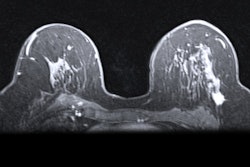

.fFmgij6Hin.png?auto=compress%2Cformat&fit=crop&h=167&q=70&w=250)





